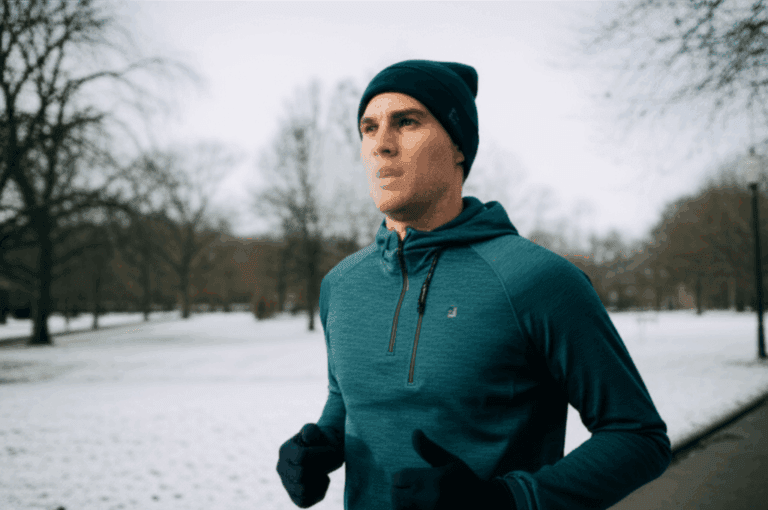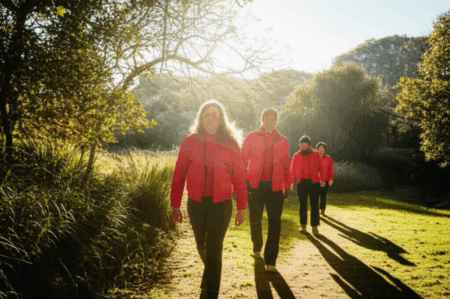As the temperature drops and the days shorten, the motivation to maintain a regular exercise routine can wane. It’s a common question: Is it okay to exercise less in the winter? The answer isn’t a simple yes or no. It depends on your individual circumstances, fitness goals, and how you approach the season.
The Winter Slump: Why Exercise Declines
Several factors contribute to decreased physical activity during winter:
- Environmental factors: Colder temperatures, icy conditions, and fewer daylight hours make outdoor workouts less appealing and sometimes dangerous.
- Seasonal Affective Disorder (SAD): Reduced sunlight exposure can lead to lower mood and energy levels, decreasing the desire to exercise.
- Holiday season: Increased social events, travel, and packed schedules often disrupt regular routines, including exercise.
- “Hibernation mode”: Some people naturally feel inclined to rest more during winter, leading to a decrease in activity.
A 2020 NRPA poll revealed that 58% of U.S. adults are less active during the winter. A 2022 poll showed a decrease of 31% in exercise frequency during colder months.
The Importance of Staying Active
Despite the challenges, maintaining physical activity in winter is crucial for both physical and mental health.
- Physical Health:
- Weight management: Winter often involves increased calorie intake. Exercise helps burn those extra calories.
- Cardiovascular health: Regular activity helps maintain a healthy heart, lowers blood pressure, and improves cholesterol levels.
- Immune system boost: Exercise increases blood circulation and promotes the production of white blood cells, which help fight off infections.
- Bone health: Weight-bearing exercises help strengthen bones and reduce the risk of osteoporosis.
- Combating Vitamin D Deficiency: Lack of sunlight reduces exposure to vitamin D. Although exercise does not directly increase vitamin D production, going outside to exercise, even for short periods, can help.
- Mental Health:
- Mood boost: Exercise releases endorphins, which promote feelings of happiness and well-being, helping to combat SAD.
- Stress reduction: Physical activity can effectively reduce stress.
- Improved sleep: Regular exercise can improve sleep patterns, which are often disrupted during winter.
Adjusting Your Exercise Routine: Finding the Right Balance
It’s perfectly acceptable to adjust your exercise routine in winter, but complete inactivity isn’t recommended. Here’s how to strike a balance:
- Listen to your body: Acknowledge that winter encourages rest and slowing down. Don’t feel guilty for enjoying cozy nights in or relaxing on the sofa.
- Set realistic goals: Aim to maintain your fitness level rather than pushing for significant gains. Set small, achievable goals, such as working out three times a week or moving for 20 minutes a day.
- Be flexible: Understand that even the best plan may go awry. The most important thing is to add even a small amount of physical activity to your day.
- Don’t beat yourself up: Exercise isn’t an all-or-nothing affair. If you miss a day or a few days, that doesn’t mean all is lost. Rest days are just as important as workout days.
Strategies for Staying Active in Winter
Here are several strategies to help you stay active and motivated throughout the winter months:
Indoor Activities
- Home workouts: Take advantage of online workout classes, fitness apps, and exercise videos. Many require no equipment.
- Active housework: Housework such as vacuuming, sweeping, and cleaning all count towards your physical activity goals. Walking or running up and down stairs can also be a great workout.
- Indoor sports: Consider activities like swimming, bowling, or roller skating.
- Mall walking: Walk around a shopping mall for exercise and a change of scenery.
- Stretching and yoga: Stretching exercises and yoga are great for maintaining flexibility and reducing stress.
- Recreation centers: Local parks and recreation centers offer many indoor options, including gyms, fitness centers, martial arts, and aquatics.
Outdoor Activities
- Dress appropriately: Wear several layers of comfortable clothing that can be removed easily as you warm up. Choose moisture-wicking fabrics for your first layer. Protect your hands and toes with thick socks and gloves, and cover your head and neck.
- Monitor the weather: Check the weather forecast and plan your activities accordingly. Be aware of ice, snow, wind, and rain.
- Take nature walks: Schedule time during the day to enjoy nature, weather permitting.
- Winter sports: Embrace winter by trying activities like ice skating, sledding, cross-country skiing, or snowshoeing.
- Shoveling snow: Shoveling snow is a great way to get exercise while taking care of a necessary task.
- Be flexible: Be willing to adjust your outdoor workout based on weather conditions.
Staying Motivated
- Find a workout buddy: Exercising with a friend or family member can help you stay accountable and make workouts more enjoyable.
- Join a class or group: Book a weekly exercise class or join a local fitness group.
- Set a goal: Sign up for a race or challenge to keep you on track.
- Track your progress: Keep a record of your accomplishments to remind you how far you’ve come and motivate you to continue.
- Reward yourself: After completing a workout, treat yourself to something you enjoy, such as a warm bath or your favorite TV show.
- Think beyond weight: Focus on the many benefits of exercise, such as improved mood, increased energy, and better overall health.
- Embrace the lighter parts of the day: If you suffer from SAD, try to exercise earlier in the day to take advantage of sunlight.
- Make a plan: Schedule your workouts and protect that time as part of your regular routine.
- Make it social: Exercise with friends or family.
Safety Considerations
- Warm-up properly: Cold weather makes muscles tighter, increasing the risk of injury. Start every workout with a warm-up, especially if you’re outside. Spend 5–10 minutes doing dynamic stretches or gentle movements like walking in place, jumping jacks, or arm circles to get your blood flowing and prepare your muscles.
- Stay hydrated: Cold air can be dehydrating, so it’s important to drink plenty of water before, during, and after exercise.
- Be visible: Wear bright clothing or reflective gear if you’re exercising in the dark.
- Avoid icy surfaces: Be careful when walking or running on icy surfaces. Use footwear with good grip for stability.
- Listen to your body: If something feels off, don’t push through it. Adapt to your needs and take it day by day.
Winter is NOT a Fitness Freeze!
While it’s normal to feel less motivated to exercise in winter, it’s important to find ways to stay active for your physical and mental well-being. Adjust your routine as needed, explore indoor and outdoor options, and focus on making exercise a fun and sustainable part of your winter lifestyle. Remember, any activity is better than none, and consistency is key to maintaining your fitness and health throughout the year.







